Kennedy, William Wallace (Flight Lieutenant)
Killed in Action 1944-October-28


Birth Date: 1921
Born:
Parents: Son of David Kennedy, and of Margaret J. Kennedy, of Toronto, Ontario, Canada.
Spouse:
Home: Toronto, Ontario
Enlistment:
Enlistment Date: unkown date
Service
RCAF
Unit
400 Sqn- Squadron
Percussuri Vigiles On the watch to strike
Base
Rank
Flight Lieutenant
Position
Pilot
Service Numbers
J/9434
Home
Spitfire serial: PL925
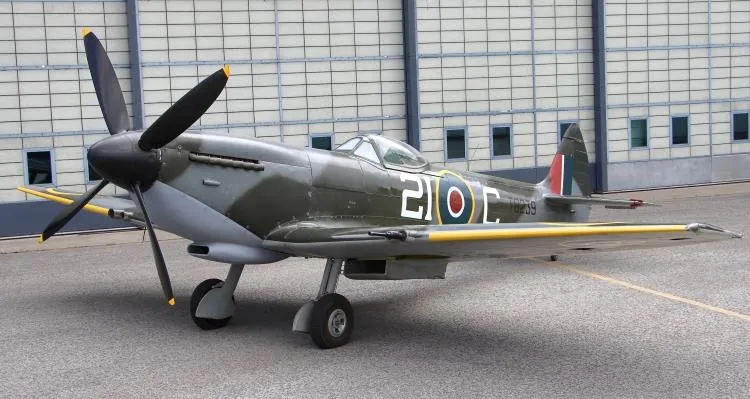
The Supermarine Spitfire is a British single-seat fighter aircraft that was used by the Royal Air Force and other Allied countries before, during, and after World War II. Many variants of the Spitfire were built, using several wing configurations, and it was produced in greater numbers than any other British aircraft. It was also the only British fighter produced continuously throughout the war. The Spitfire continues to be popular among enthusiasts; around 70 remain airworthy, and many more are static exhibits in aviation museums throughout the world.
The Spitfire was designed as a short-range, high-performance interceptor aircraft by R. J. Mitchell, chief designer at Supermarine Aviation Works, which operated as a subsidiary of Vickers-Armstrong from 1928. Mitchell pushed the Spitfire's distinctive elliptical wing with cutting-edge sunken rivets (designed by Beverley Shenstone) to have the thinnest possible cross-section, helping give the aircraft a higher top speed than several contemporary fighters, including the Hawker Hurricane.
The Spitfire had detachable wing tips which were secured by two mounting points at the end of each main wing assembly. When the Spitfire took on a role as a high-altitude fighter (Marks VI and VII and some early Mk VIIIs), the standard wing tips were replaced by extended, "pointed" tips which increased the wingspan from 36 ft 10 in (11.23 m) to 40 ft 2 in (12.24 m). The other wing-tip variation, used by several Spitfire variants, was the "clipped" wing; the standard wing tips were replaced by wooden fairings which reduced the span by 3 ft 6 in (1.07 m). The wing tips used spruce formers for most of the internal structure with a light alloy skin attached using brass screws.
Due to a shortage of Brownings, which had been selected as the new standard rifle calibre machine gun for the RAF in 1934, early Spitfires were fitted with only four guns, with the other four fitted later. Early tests showed that, while the guns worked perfectly on the ground and at low altitudes, they tended to freeze at high altitude, especially the outer wing guns, because the RAF's Brownings had been modified to fire from an open bolt. While this prevented overheating of the cordite used in British ammunition, it allowed cold air to flow through the barrel unhindered. Supermarine did not fix the problem until October 1938, when they added hot air ducts from the rear of the wing-mounted radiators to the guns, and bulkheads around the gunbays to trap the hot air in the wing. Red fabric patches were doped over the gun ports to protect the guns from cold, dirt, and moisture until they were fired.
The first Rolls-Royce Griffon-engined Mk XII flew in August 1942, and first flew operationally with 41 Squadron in April 1943. This mark could nudge 400 mph (640 km/h) in level flight and climb to an altitude of 33,000 ft (10,000 m) in under nine minutes. As American fighters took over the long-range escorting of USAAF daylight bombing raids, the Griffon-engined Spitfires progressively took up the tactical air superiority role, and played a major role in intercepting V-1 flying bombs, while the Merlin-engined variants (mainly the Mk IX and the Packard-engined Mk XVI) were adapted to the fighter-bomber role. Although the later Griffon-engined marks lost some of the favourable handling characteristics of their Merlin-powered predecessors, they could still outmanoeuvre their main German foes and other, later American and British-designed fighters.Wikipedia
![]() Wikipedia Supermarine Spitfire
Wikipedia Supermarine Spitfire
Unit Desciption
400 Sqn Percussuri Vigiles ("City of Toronto")
History of the Squadron before and during World War II (Aircraft:Lysander III, Tomahawk I, IIA, IIB, Mustang I, Mosquito PR Mk. XVI, Spitfire PR Mk. XII)

The squadron started life as No. 10 (Army Co-Operation) Squadron (Auxiliary) at Toronto in October 1932. In November 1937 the unit was renumbered No 110. On the outbreak of WWII, the squadron was mobilized and moved to Rockcliffe, ON, to train on Westland Lysander aircraft, having previously flown de Havilland DH-60 Moth, Fleet Fawn, Avro 621 Tutor, Avro 626, and de Havilland DH-82 Tiger Moth. The squadron arrived in England in February 1940. The squadron did not see action and with the fall of France, it remained in England, and was later renumbered as No. 400 (Army Cooperation) Squadron at Odiham, Hampshire, UK  on March 1, 1941.
on March 1, 1941.
From then until 3 December 1942 the squadron was affiliated to No. 39 (Army Co-operation) Wing (RCAF), then it moved to Fighter Command (No 10 Group) at Dunsfold, Surrey. In December 1942 and January 1943 a section of aircraft flew in No 19 Group of Coastal Command providing fighter cover over the Bay of Biscay from airfields at Portreath and Trebelzue, Cornwall. The squadron rejoined 10 Group and then rapidly returned in January 1943 to No 39 Army Co-operation Wing, by now designated as a Fighter Reconnaissance (FR) Squadron. It then formed part of the 2nd Tactical Air Force, based successively at Woodchurch, Kent, Redhill, Surrey and Odiham, Hampshire. With squadron code letters SP, the squadron flew Curtiss Tomahawks, North American Mustangs and Supermarine Spitfires on photo-reconnaissance work, collecting intelligence information to help to plan the D-Day invasion, and later on the effects of bombing of V-1 launch sites. From December 1943 to May 1944 the squadron aircraft included 6 Mosquito PR Mk XVI. Shortly after D-day the Squadron moved to airfields in France, and provided tactical photographic reconnaissance for the British Second Army. As the armies moved forwards, the squadron followed, flying from bases in France, Belgium, The Netherlands and Germany. The squadron was finally disbanded at Luneburg, Germany  in August 1945.
in August 1945.
In the course of the war, the squadron flew around 3000 sorties, for the loss of 12 pilots killed or missing. They destroyed numbers of enemy aircraft and attacked numerous trains and locomotives. They were awarded 10 DFC's, 1 Bar to DFC, 1 BEM, 3 MiD's. Battle Honours include Fortress Europe 1941–44, Dieppe, France and Germany 1944–45, Normandy 1944, Arnhem, Rhine, Biscay 1942–43 Kostenuk and Griffin
Maps for Movements of 400 Squadron 1940-45
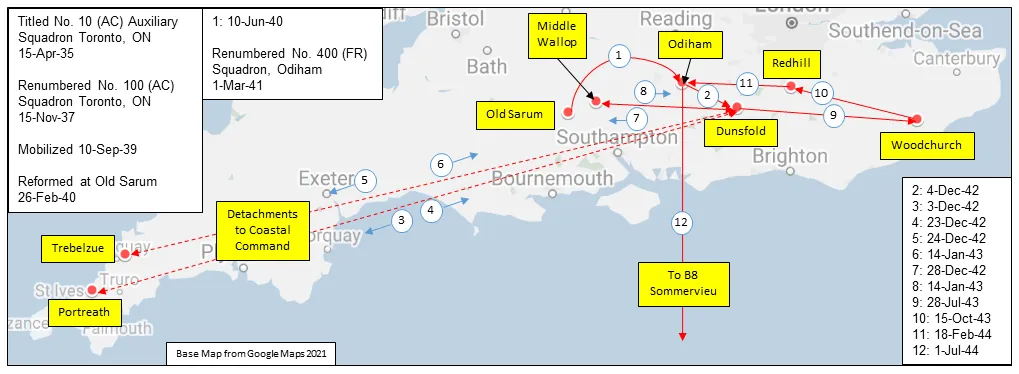
MAP 1: 400 Squadron Movements in Britain 1940-44, (right-click on image to display enlarged in new tab)
|
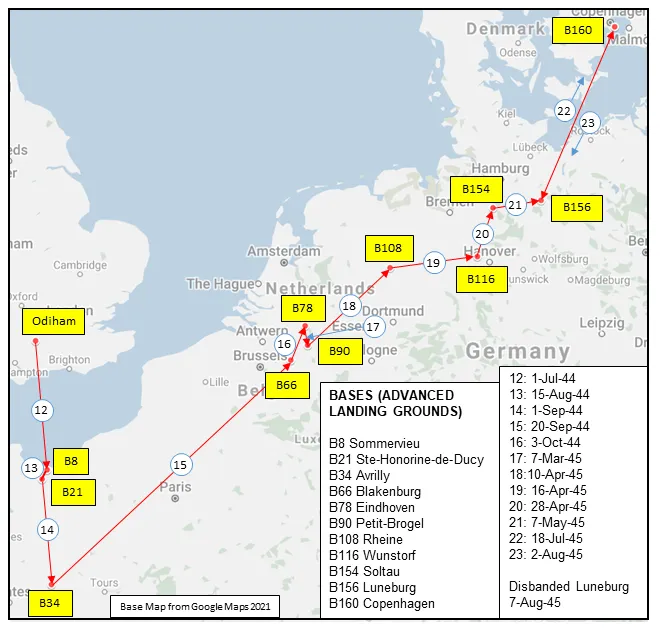
MAP 2: 400 Squadron Movements in Europe 1944-45
|
400 Sqn History Summary 1939-45
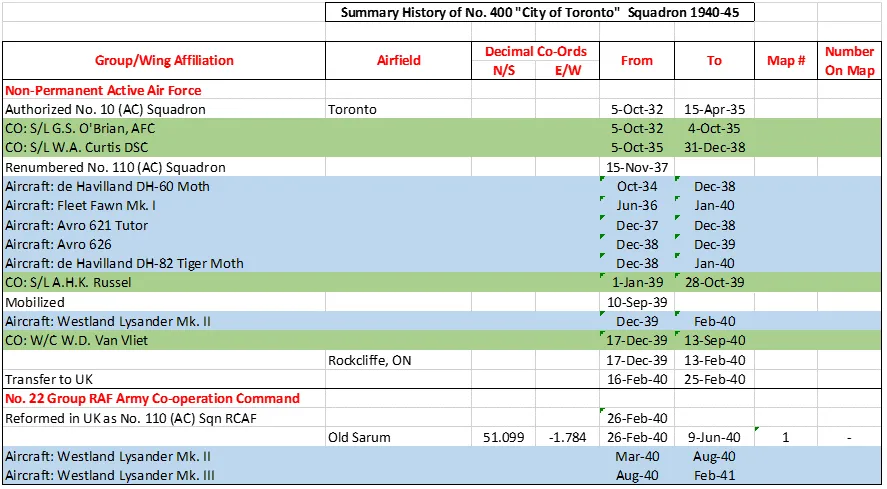
400 Sqn History Summary 1939-45 Page 2
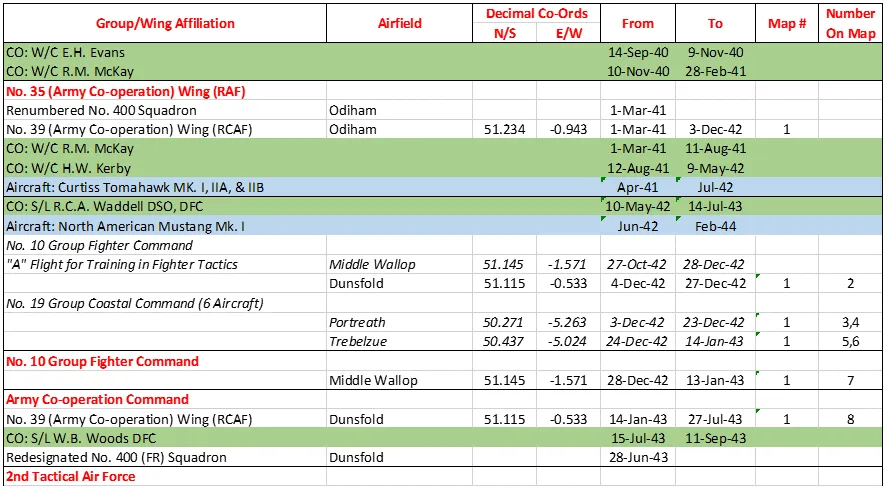
400 Sqn History Summary 1939-45 Page 3

History of the Squadron Post-WWII (Aircraft: Harvard III, Vampire III, Sabre V, Expeditor, Otter, Kiowa, Griffin)
No. 400 Squadron reformed at RCAF Station Downsview, ONtario  on 15 April 1946 as an Auxiliary Fighter-Bomber Squadron, and later as an Auxiliary Fighter Squadron, operating North American Harvard Mk IIB. At the start of the Cold War the squadron flew de Havilland Vampire Mk IIIs and then Canadair Sabre Mk.V aircraft. It was re-named No. 400 "City of Toronto" (Fighter) Squadron on 6 November 1952, and then re-designated No. 400 “City of Toronto†Sqn (Aux) on 1 October 1958, when it was reassigned to a light transport and emergency rescue function and was equipped with Beechcraft Expeditor (1958) and de Havilland Otter (1960) aircraft. These aircraft were flown throughout the 1960s and 1970s.
on 15 April 1946 as an Auxiliary Fighter-Bomber Squadron, and later as an Auxiliary Fighter Squadron, operating North American Harvard Mk IIB. At the start of the Cold War the squadron flew de Havilland Vampire Mk IIIs and then Canadair Sabre Mk.V aircraft. It was re-named No. 400 "City of Toronto" (Fighter) Squadron on 6 November 1952, and then re-designated No. 400 “City of Toronto†Sqn (Aux) on 1 October 1958, when it was reassigned to a light transport and emergency rescue function and was equipped with Beechcraft Expeditor (1958) and de Havilland Otter (1960) aircraft. These aircraft were flown throughout the 1960s and 1970s.
Unification of the Canadian Forces brought about another name change, this time to 400 "City of Toronto" Air Reserve Squadron on 1 February 1968. In 1980, the conversion to helicopters began with the CH-136 Kiowa. The squadron received its current name in the 1980s, becoming 400 Tactical Helicopter and Training Squadron. The squadron moved to CFB Borden, Ontario  in 1996 after the closure of CFB Downsview, and is now equipped with the CH-146 Griffon.
in 1996 after the closure of CFB Downsview, and is now equipped with the CH-146 Griffon.
During peacetime, the squadron fulfills 1 Wing commitments by providing operational and training support to the 4th Canadian Division, the defence of Canadian sovereignty, support to national taskings, and support to peacekeeping operations. Its secondary duties are to support search and rescue operations of the Royal Canadian Air Force.